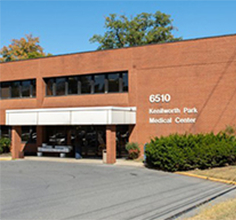.jpg)
Whether you’ve been diagnosed with diabetes or you’re just paying more attention to your health, blood glucose monitoring can feel overwhelming at first. Learning how to track and manage it is one of the most important steps you can take toward staying healthy and preventing long-term complications. Southern Maryland Medical Group is here to help. If you want to feel empowered, not confused, about your blood sugar, keep reading.
Glucose is your body’s main source of energy. It comes from the food you eat and moves through your bloodstream to your cells, where it’s used for fuel. But, if your blood sugar stays too high for too long, it damages blood vessels, nerves, and organs. Over time, the damage can lead to heart disease, kidney problems, vision loss, and other serious conditions. People with diabetes are more likely to have a heart attack or stroke, so many cardiologists work closely with patients on blood sugar control, so your heart doctor might be just as concerned with your glucose numbers as your endocrinologist. Knowing your numbers and learning how they shift throughout the day is the first step toward protecting your health.
The most common ways to check your glucose is with fingerstick meters and continuous glucose monitors. A standard glucose meter gives you a quick snapshot. You prick your finger, place a tiny drop of blood on a test strip, then wait for the result. It’s simple, but it only shows what’s happening at that moment. If you only check once or twice a day, you might miss important patterns. CGMs are small devices that use a tiny sensor placed under the skin to measure glucose levels every few minutes. The data gets sent to your phone or a reader device so you can see trends. You’ll know how your blood sugar responds to meals, stress, exercise, and sleep. CGMs can also send alerts if your levels go too high or too low. The best option depends on your health, preferences, and insurance. CGMs are usually recommended for people with type 1 diabetes, but more doctors are encouraging their use for type 2 diabetes and prediabetes. Talk to your primary care doctors about whether a CGM might be right for you. Don’t assume it’s only for tech-savvy patients or those already on insulin. It’s also important to keep a written or digital log of your numbers, especially if you’re using a fingerstick meter. Note the time of day, what you ate, how you felt, and any medications.
Understanding your target range makes your monitoring useful. Blood sugar goals can vary, but most agree on these general guidelines:
If you’re older, have multiple health conditions, or are at risk for low blood sugar, your target range may be adjusted to keep you safe. It’s normal for blood sugar to rise and fall during the day, but it’s important to avoid spikes and crashes that put stress on your body. If your numbers are slightly outside your target range often, you’ll want to check in with your cardiologist. Your treatment plan may need adjusting.
You don’t have to overhaul your entire life to make meaningful changes. Small, consistent habits make the biggest difference.
Whether you’re newly diagnosed or want to stay ahead of future risks, blood glucose monitoring is a core part of your personal health toolkit. If you’re not sure where to start or if it’s time to update your current routine, Southern Maryland Medical Group is here to help. We work with each patient to create plans that make sense for your life. Book a visit with a heart doctor or one of our primary care doctors today so you can take control of your blood sugar on your own terms.
Southern Maryland Medical Group has 3 convenient locations to provide professional medical care services in the Southern Maryland area. Call or schedule an appointment with one of our locations to get medical care help.

5801 Allentown Road, Suite 400 Camp Spring, MD 20746
Phone: 301-868- 0150
Billing Inquiries: 301-552-1270
Fax: 301-868-0243

7500 Greenway Center, Dr #1200 Greenbelt, MD 20770
Phone: 301-486-7580
Billing Inquiries: 301-552-1270
Fax: 301-486-7581

6510 Kenilworth Ave, Ste 1400, Riverdale MD 20737
Phone: 301-618-0771
Billing Inquiries: 301-552-1270
Fax: 301-618-0772